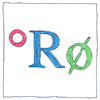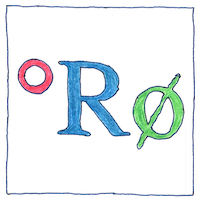Ole Rømer
thermometry

|
Rømer scale
Ole Christensen Rømer made the first calibrated general-use scale for temperature, setting zero to the freezing point of brine and sixty to the boiling point of water. To make it easier to make one, he added a third calibration point, the freezing point of pure water, about 7.5 °Rø. For the liquid in his thermometer, Rømer used red wine. The alcohol lowered its range below freezing, the water increased its range above the boiling point of alcohol, and the redness made its level more visible.
Previous thermometers
The highs and lows of previous devices that responded to temperature were highly variable, and did not feature a calibrated scale except for Newton’s, which Newton described in 1701 also. Galileo invented the thermoscope by 1593, a glass bulb attached to a vase of water by a narrow tube. Contraction of air in the bulb pulled water up the tube. This device showed different levels for varying atmospheric pressures, but of course atmospheric pressure was not well understood. Around 1612, Francesco Sagredo or Santorio Santorio was the first to put a scale on a thermoscope. In 1629, Joseph Solomon Delmedigo described a sealed-glass thermometer using brandy. and about 1654, Ferdinando II de’ Medici made sealed-glass thermometers with bulbs containing alcohol. In 1666, Evangelista Torricelli, a student of Galileo who invented the mercury barometer, and his student Vincenzo Viviani were in a group of academicians that invented a thermometer and named it after Galileo because of Galileo’s discovery that the density of a liquid varies with its temperature. The Galileo thermometer features small glass bulbs of different weights that rise and fall in a glass cylinder of water and ethanol. In 1695, Guillaume Amontons invented a pressure-independent air thermometer for use aboard a ship. In 1665, Christiaan Huygens suggested using the melting and boiling points of water as standards, and in 1694 Carlo Renaldini proposed using them as calibration points on a scale that could be reproduced by everyone, but it took a while longer for anyone to try it.
To each his own
No one expected to know a temperature to a degree. We all have our own vague, unnamed temperatures. Without a word for it no one suspected anything was missing. The umami of an invention is the taste of its usefulness. What good is a good idea if the mouth doesn’t open to let it in?



Other scientists had established temperature scales; the genius of Huygens, Renaldini, and Rømer was to choose reproducable fixed points that others could use to calibrate their thermometers.
See also in The book of science:
Readings in wikipedia: